Many assume that the word Narcissus is derived from Prince Narcissus of the ancient Greek tragedy, who fell in love with his own reflection, drowned, and broke a nymph’s heart. But that refers to a different Narcissus, the Narcissus Poeticus.
Pliny the Elder (23/24 - 79 AD), hero and Roman writer of the world’s first encyclopaedia, tells us that the word Narcissus is actually from the Greek word ‘narkō’ or ‘narkissos’, to make numb, and the root of the word ‘narcotic’. This makes good sense as eating Narcissus causes light-headedness, drowsiness and can even cause you to collapse.
‘Pseudo’ comes from the Greek word for ‘false’: pseudés.
The word daffodil itself comes from Medieval Latin, Affodilus, which is derived from the Greek word Asphodels. The Greeks felt that the Asphodel’s blossoms looked similar to the Daffodil’s flowers, but you need quite an imagination to see a similarity.
The letter ‘d’ was added and came to English through the Dutch in the 15th century. ’De Affodil’ became daffodil over time. Although the Dutch themselves now call the Daffodil, ‘Narcis’.
What both plants do have in common, is their perceived connection with death. Asphodel as a plant favoured by Hades, Greek God of the dead, who grew it in the Elysian fields close to the underworld. And Narcissus, in memory of the sad death by drowning of Prince Narcissus.
Although the daffodil was no longer seen as a harbinger of death by the early 20th century, it was still seen as bad luck to bring daffodils into your home. Mainly by poultry keepers, who believed that if you put a vase of daffodils in your home before your chickens’ eggs had hatched, there wouldn’t be any chicks that year. The same for goslings apparently.
Albertus Magnus (1200 - 1280), whom we met when exploring the ‘Hellebore’, also had some thoughts about the powers of the Daffodil. Especially as a remedy against madness and melancholy or if you were possessed by evil spirits. All you’d have to do was boil the root bulb and carry it around with you in a clean hanky. In addition it would keep you from having devils enter your house and stop you from being scared or indeed getting hurt, if you’re out and about at night. Bear in mind Albertus also recommended you should rub yourself with billy-goat-tallow to make your wife desire you forever. As a friar he obviously didn’t quite understand what women want!
Albertus Magnus might have been on to something though. Interestingly, alkaloids from daffodils have been used to produce galantamine to help treatment of Alzheimer’s dementia. So maybe there is more to his 800 year old wisdom than we give him credit for. Do note though, that eating any part of a wild daffodil can cause nausea, vomiting, diarrhoea, stomach aches, sweating, light-headedness, drowsiness and, in the end, collapse. Worse, it can cause death by paralysis of the nervous system. Best not give in to those Daffodil nibbling urges!
Fields of Wild Daffodils are now relatively rare, but in the late 1500’s daffodils grew in abundance in meadows close to London. Inns and taverns used to be lavishly decorated with daffodils in springtime. In old paintings and modern day movies we often see those old inns and taverns depicted as dark and dingy places. But perhaps we should imagine them full of bright yellow daffodils.
There are still some colonies of Wild Daffodils around, and none more famous than the daffodils on the banks of Ullswater in the Lake District, immortalised by Wordsworth in his poem “I wandered lonely as a cloud”.
This newsletter is NOT a field guide for flower identification. It’s often difficult to tell the difference between harmless plants and poisonous plants and some flowers are rare and protected by law, so, NEVER pick or use any plants or flowers if you’re not sure about them.
illustrations and text ©Chantal Bourgonje


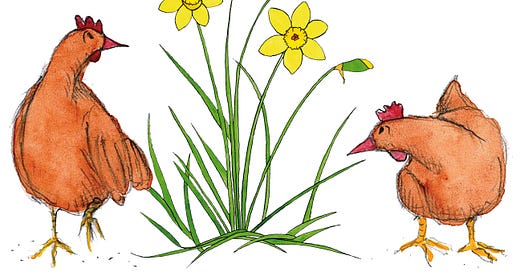



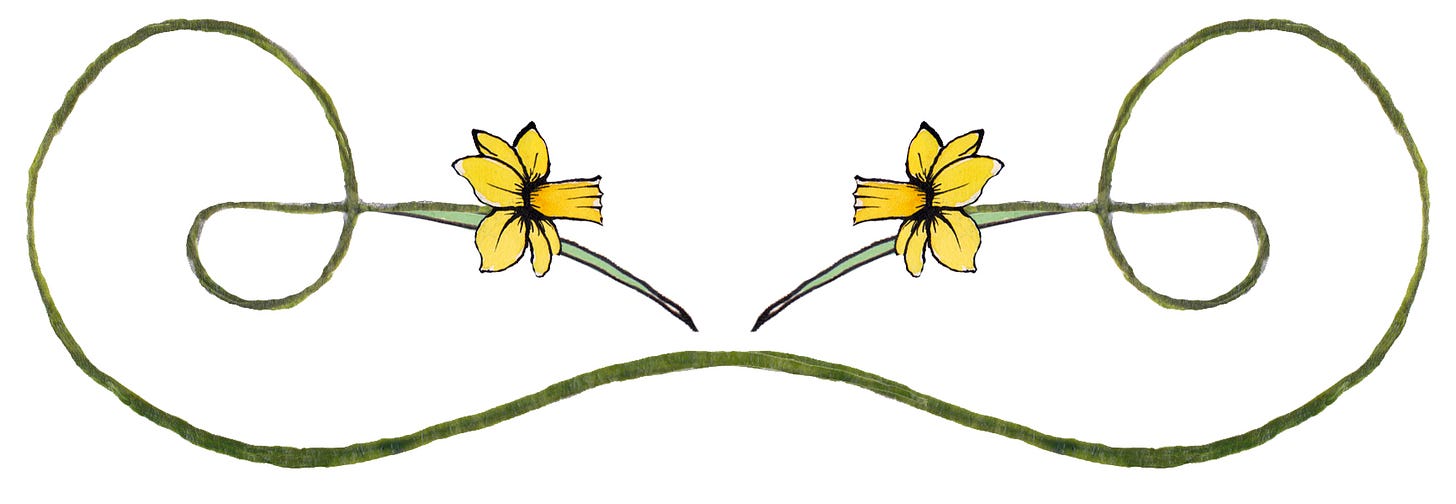
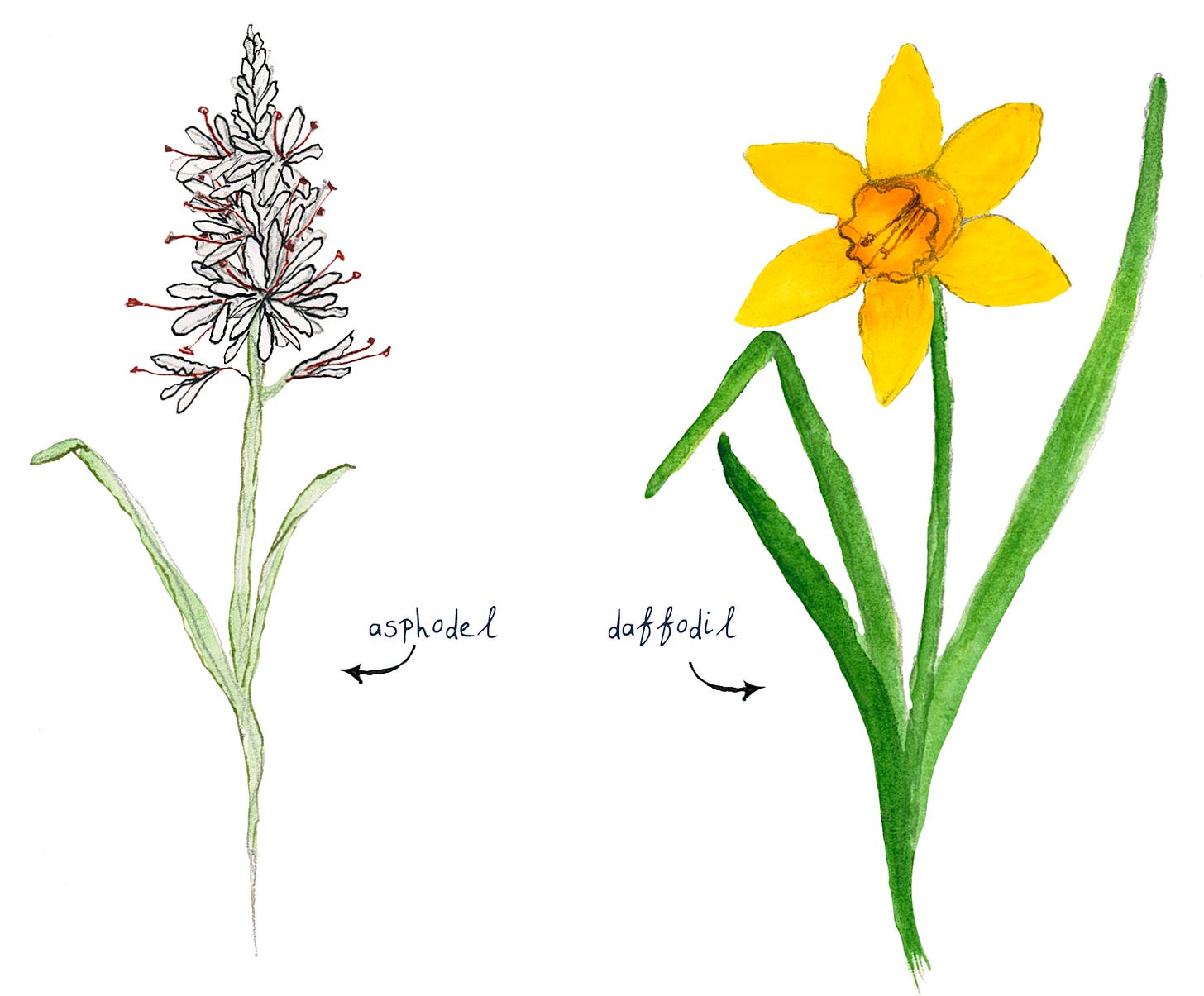


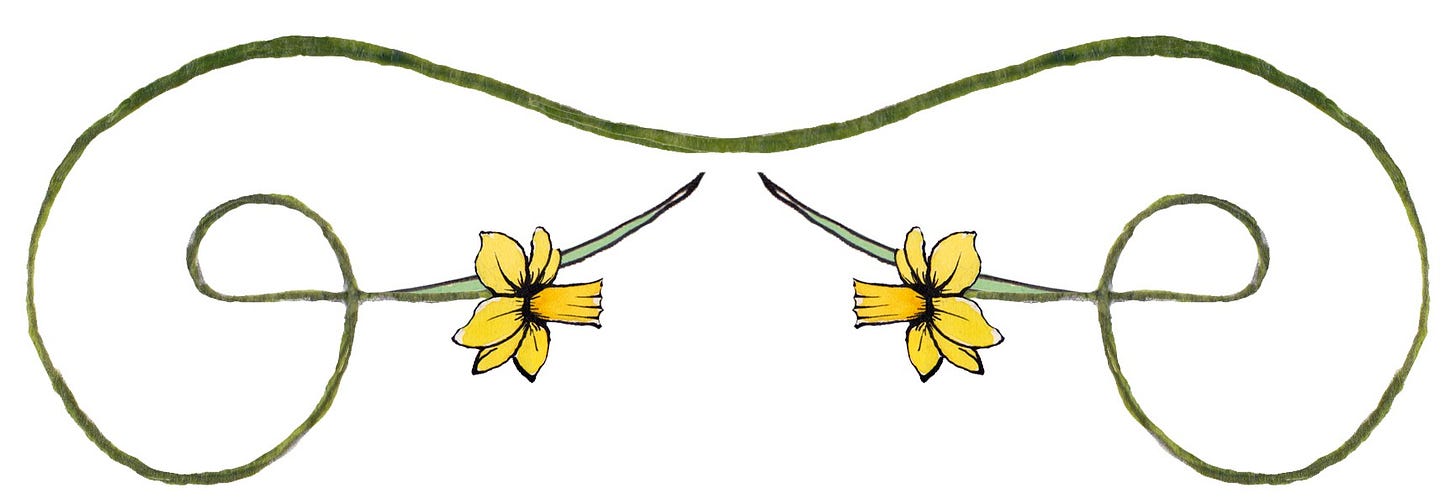
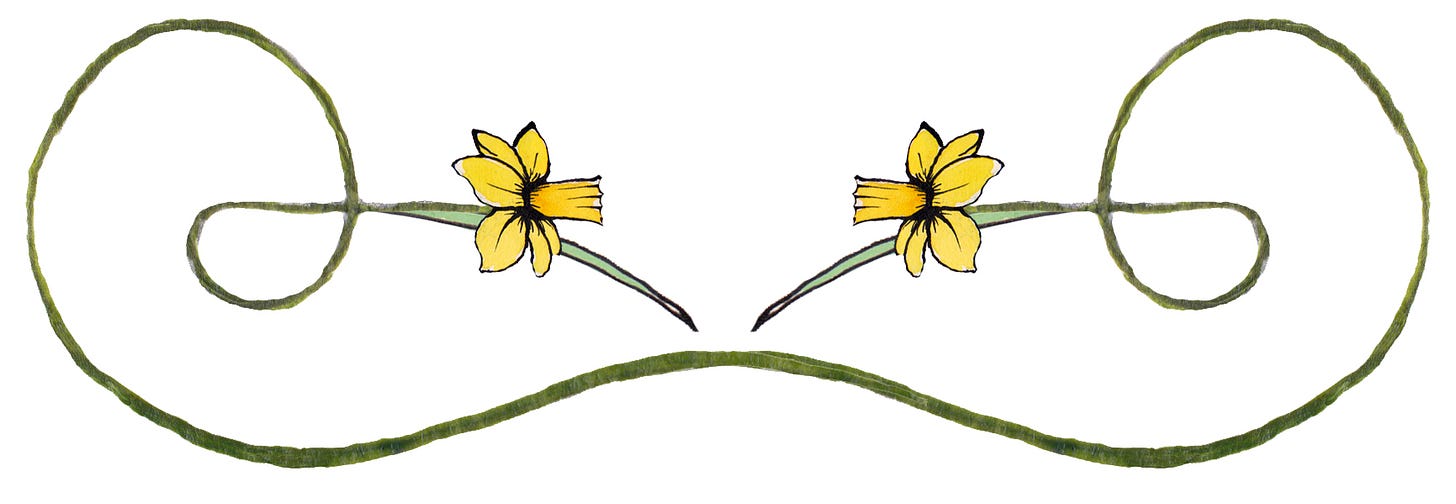
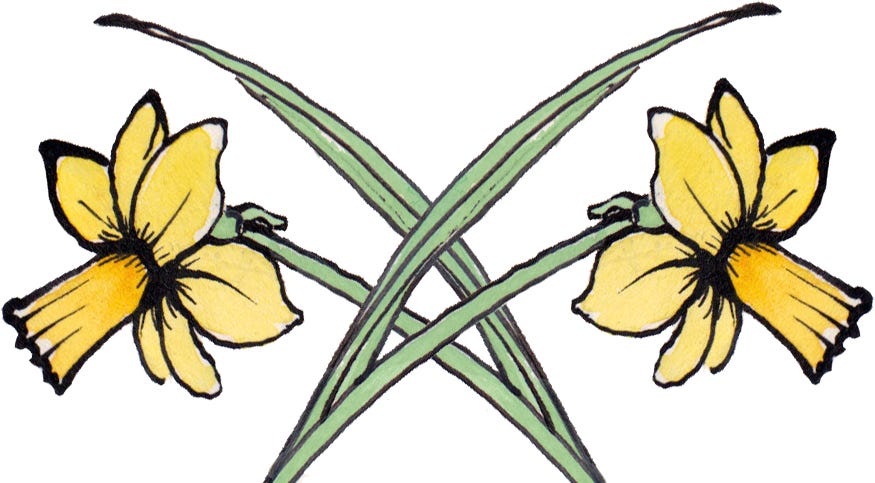

A very interesting and informative read.
This is so interesting! Thank you so much for sharing, and I'm glad to have found your newsletter. Melissa 🌿